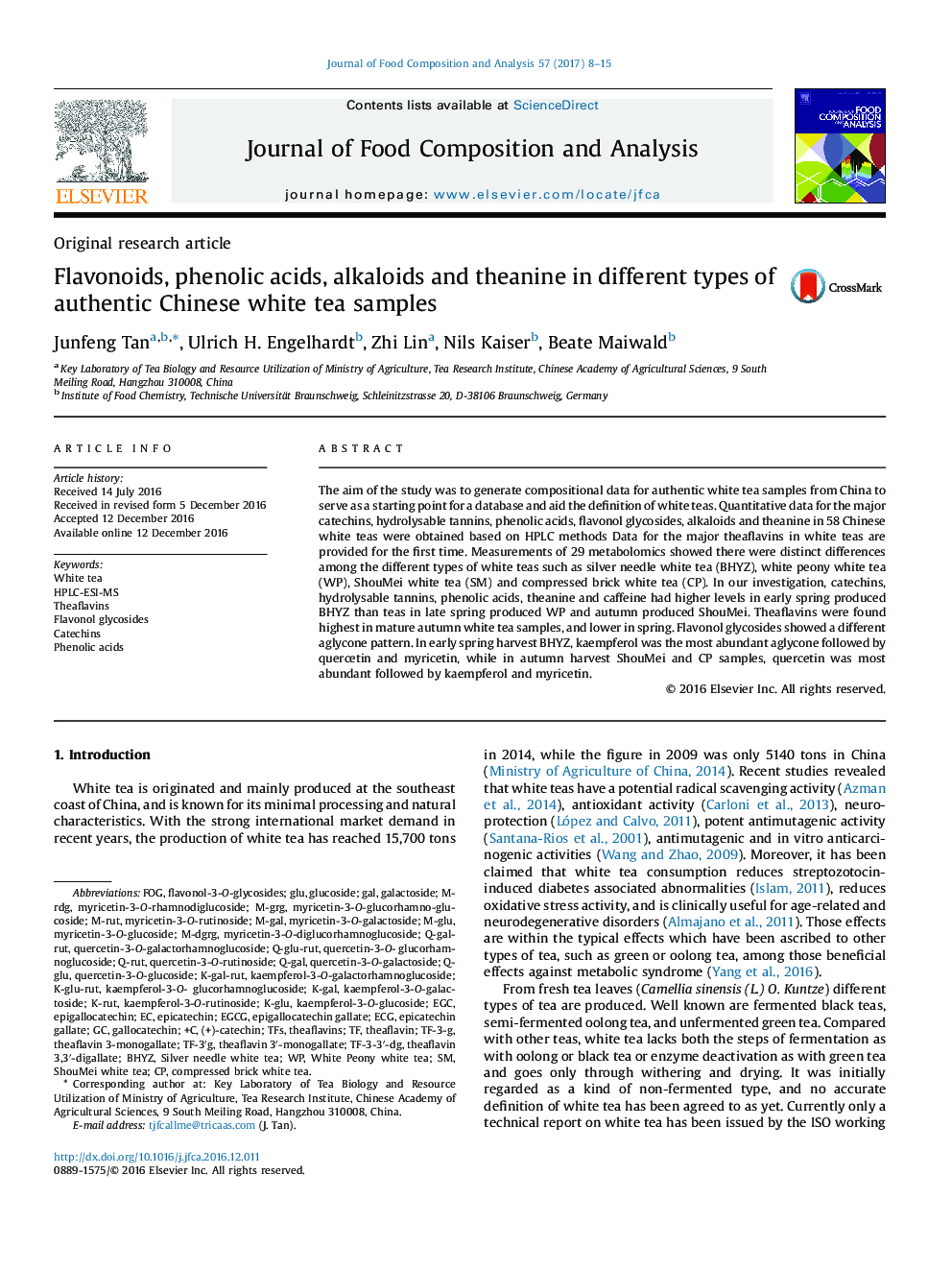| Article ID | Journal | Published Year | Pages | File Type |
|---|---|---|---|---|
| 5136998 | Journal of Food Composition and Analysis | 2017 | 8 Pages |
â¢Quantitative data of four major theaflavins in white teas are provided.â¢Data for flavonoids, phenolic acids, and theanine in 58 white teas are presented.â¢Compositional data are different depending on the season.
The aim of the study was to generate compositional data for authentic white tea samples from China to serve as a starting point for a database and aid the definition of white teas. Quantitative data for the major catechins, hydrolysable tannins, phenolic acids, flavonol glycosides, alkaloids and theanine in 58 Chinese white teas were obtained based on HPLC methods Data for the major theaflavins in white teas are provided for the first time. Measurements of 29 metabolomics showed there were distinct differences among the different types of white teas such as silver needle white tea (BHYZ), white peony white tea (WP), ShouMei white tea (SM) and compressed brick white tea (CP). In our investigation, catechins, hydrolysable tannins, phenolic acids, theanine and caffeine had higher levels in early spring produced BHYZ than teas in late spring produced WP and autumn produced ShouMei. Theaflavins were found highest in mature autumn white tea samples, and lower in spring. Flavonol glycosides showed a different aglycone pattern. In early spring harvest BHYZ, kaempferol was the most abundant aglycone followed by quercetin and myricetin, while in autumn harvest ShouMei and CP samples, quercetin was most abundant followed by kaempferol and myricetin.
Graphical abstractDownload high-res image (253KB)Download full-size image
